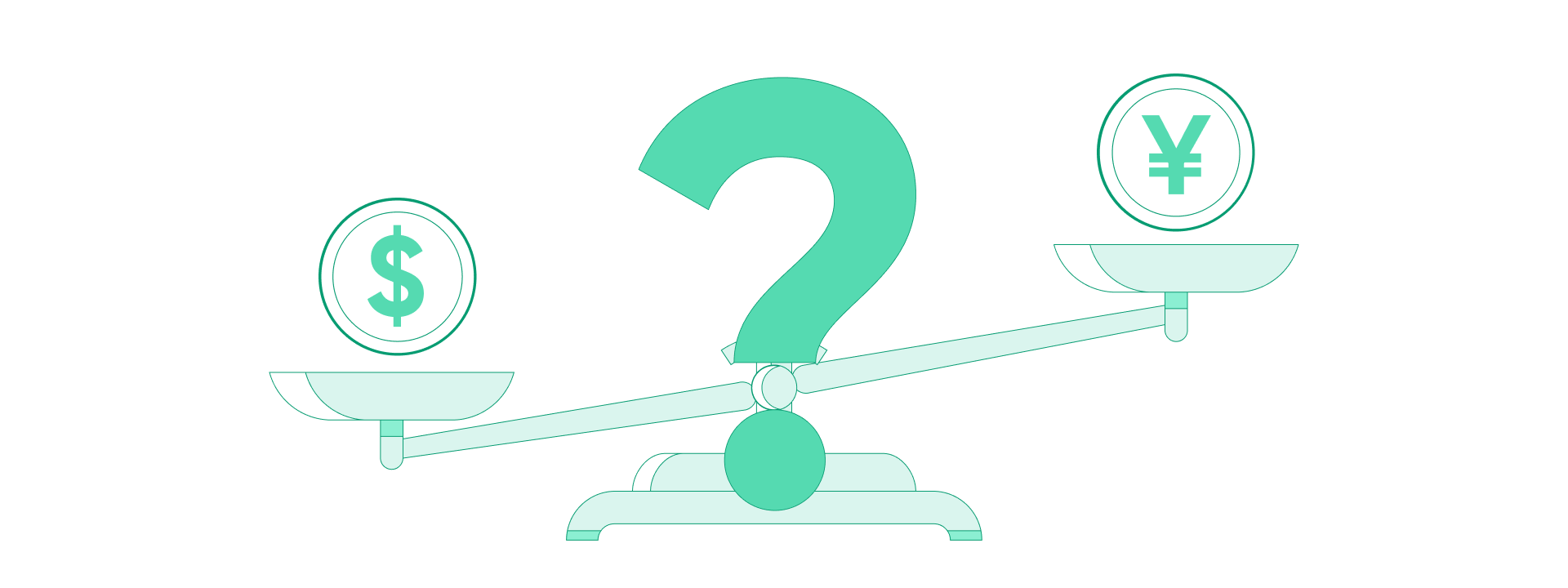Fundamental analysis indicators in forex trading
Now that we have covered what fundamental analysis is, let’s look at an example to see how it works when trading a specific currency pair. Let’s say you’re interested in USD/JPY. First, you would look at the economic conditions in both the U.S. and Japan. Then, you’d look at any upcoming macroeconomic events, geopolitical or policy changes affecting either currency, and finally, if the currency pair is overvalued or undervalued. All this information should give you a general idea of which direction USD/JPY may move in the near future.

What are the fundamental indicators to consider?
So, that’s how fundamental analysis works, but where do you find the data?
Traders use various online financial news sources to get the data they need. Our webtrader and app both feature an economic calendar and news feed you can use. When doing your analysis, ensure your sources are credible, reliable, and up to date.
Here are the factors fundamental analysts look at.
Economic health
When a country’s economy is experiencing growth, local companies will benefit, and interest for its currency may increase as well. When a country’s economy is struggling, businesses encounter more challenges –inflation, increased energy costs, and a devalued currency, all increase costs.
Using various data points including unemployment, consumer price index, gross domestic product, business confidence index, central bank statements, and other public data, you can get a decent picture of a country’s economic health.

Macroeconomic events
Macroeconomics are simply economic policies or reports released by governments or other official reporting bodies.
Some of these reports are reoccurring, like the U.S. Non-farm payrolls, which is released every first Friday of the month. Others might be impromptu due to economic conditions, so it’s important to stay on top of the news.
Here’s how policy and reports can affect a currency like Australia’s AUD which is closely tied to commodity prices. Reports like the weekly natural gas storage may affect AUD pairs as Australia is one of the world’s top natural gas producers.
We also saw policy affecting currencies, when the Turkish lira rapidly devalued because of the administration’s reluctance to increase interest rates to combat inflation.
Geopolitical events
Continuing the AUD example above, supply chain issues in 2020 caused various commodity prices to increase, which was beneficial for AUD but hurt other currencies.
The war in Ukraine caused the EUR to drop, because of increased energy prices and fear that the conflict might boil over into neighboring EU countries.
Additionally, during global volatility, traders may prefer “lower risk” currencies like the Swiss franc (CHF) or Japanese yen (JPY).
Overbought or oversold conditions
Some things may increase the markets’ interest in specific currencies.
As mentioned above, during times of global instability “safer” currencies like CHF or JPY may see more demand. This can cause a currency to become overbought i.e. be worth more than its true value.
Inversely, if a currency is aggressively sold off, like in the case of the Russian ruble with the onset of the Ukraine invasion, it becomes oversold.
It is assumed an overbought or oversold instrument will return to its true value. Which may be a sign the price will reverse its current trend.
Although a powerful tool, there is no “right” way to analyze and trade the markets. That’s why most traders use a combination of fundamental and technical analysis.
Always remember, no matter what type of analysis you use, that your strategy includes risk management. This may translate into using stop loss and take profit orders to balance your risk and reward or making sure your free margin is enough to keep your trades open if the market moves unexpectedly.
